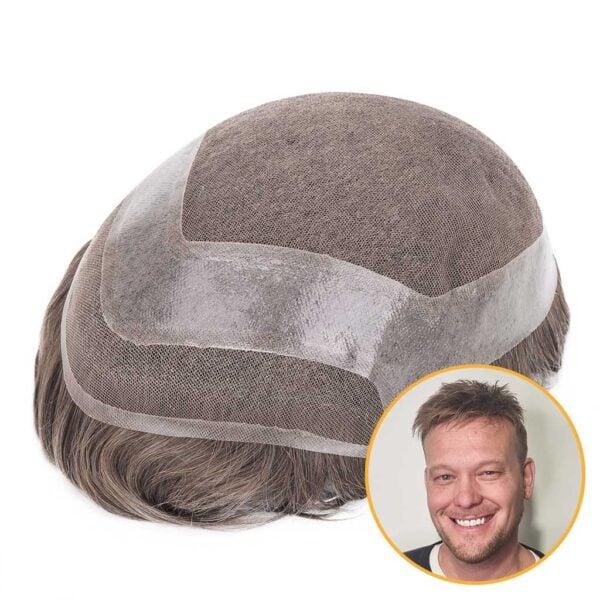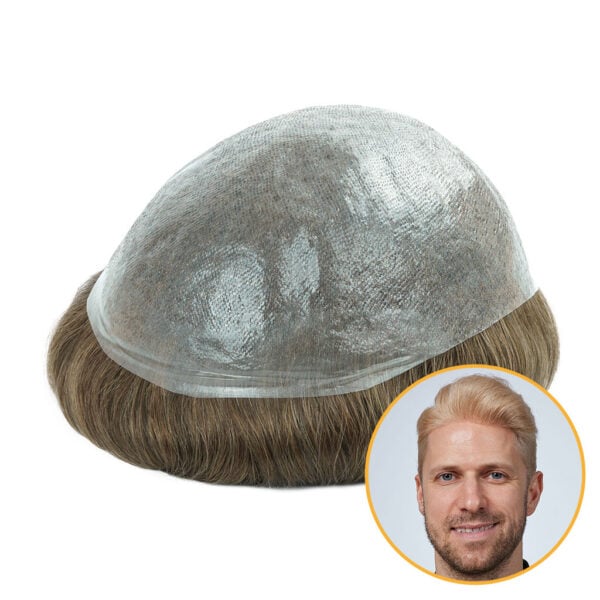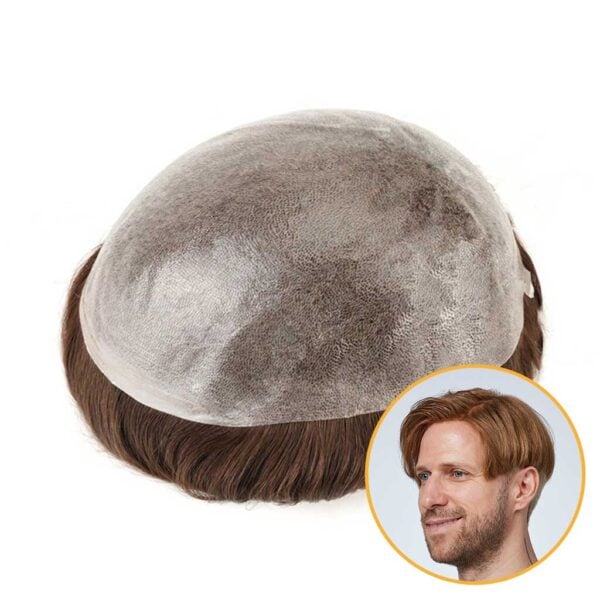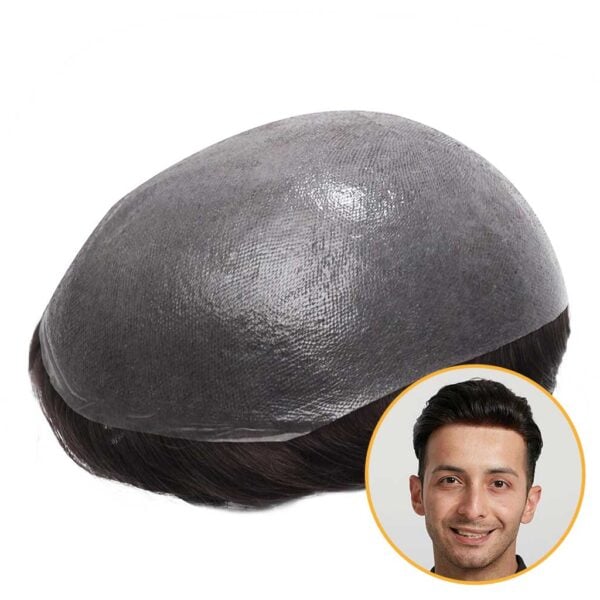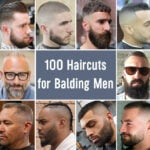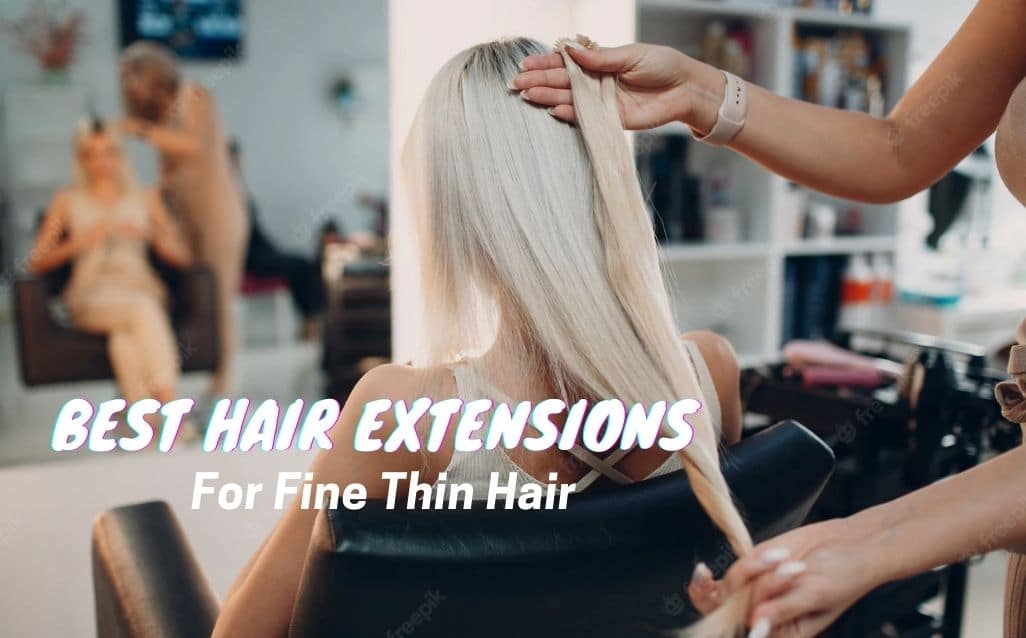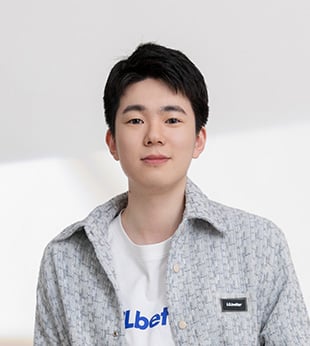Hair loss and baldness frustrate millions of men and women worldwide. A lot of people, after trying some medical therapies, opt for hair transplants. However, as statistics show, hair transplants are not for everyone.
Only about half of those whose hair is healthy enough for hair transplants. Yet, with these lucky candidates, thousands of botched, failed, unnatural, and unsuccessful transplants have been caused by surgeons who aren’t qualified to perform transplant surgery.
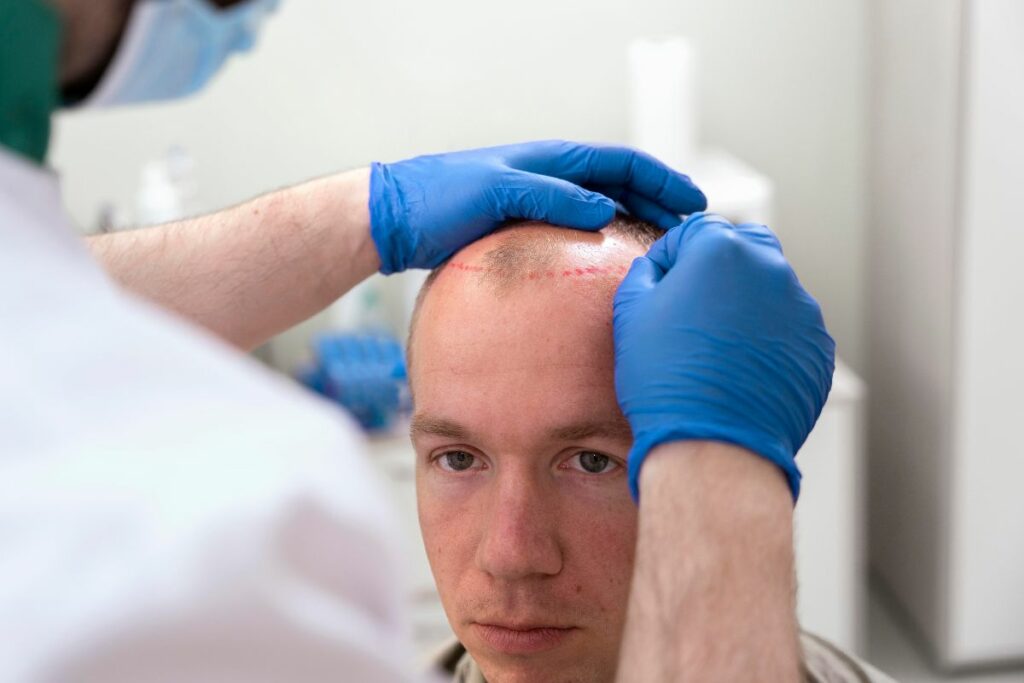
Failed Hair Transplant: What Is It?
Is your hair transplant failed? How come a hair transplant fails?
A hair transplant is a relatively costly procedure for hair restoration. There are now a lot of clinics around the world that offer hair transplants at prices that are too low to cover the essential costs of bare hair transplants. Most people who are drawn into these facilities regret it. Lots end up having damaged hair or scalp, and some even develop health issues.
Unfortunately, cheap clinics and unqualified doctors are only some of the reasons why hair transplants fail. Some clinics in Canada, the UK, the USA, and other countries, which usually charge their patients $10,000-$20,000 for hair transplant surgeries, have high failure rates rooted in weak procedure management and hiring less-experienced staff.
A question may have been raised in your mind by now, “Is a failed hair transplant restorable?” or “are we able to have an unsuccessful hair transplant fixed?”
The answer to this question is a solid yes as long as you meet the essential criteria for hair transplant restoration. To understand the procedure of a corrective transplant, you need to know the factors that result in a hair transplant surgery.
What Are the Success Factors of Hair Transplants?
Top-quality hair transplants result in a hairstyle that should be distinct from natural hair. To evaluate how effective a hair transplant procedure is, consider the following list of successful hair transplant indications:
- A Natural Hairline
It takes heaps of practice to determine the hairline successfully. Hairlines too low or too high or lacking a natural shape will seem unnatural and weird. It also requires high expertise for the implantation process, as unnatural implantation of the front portions wreaks havoc on the whole hairstyle.
- Donor Area Health
It is strange and unrecommended to overharvest the donor area or different parts of the donor area. Likely, the natural hair follicles in harmed donor tissue will likewise be damaged. So, you need to look extremely closely to identify a donor area.
- Natural Hair Density
The recipient area should receive hair follicles of average density. Unnatural density can damage healthy hair follicles in addition to being unattractive.
- Natural Hair Direction
An inexperienced surgeon’s channel opening and implantation commonly result in doll-shaped hair growth, especially in the frontal area.
- Optimal Distribution of 1,2,3, and 4-follicle Grafts
One to four hairs may be present in the obtained hair grafts. They must be picked by the hair transplant team, categorized into four groups, and distributed according to the implant strategy. It guarantees that the density is natural.
- Minimal to No Side Effects and Recovery Time
A top-quality hair transplant performed by skilled specialist teams has few side effects, and its recovery time is minimal.
Can a Hair Transplant Fail?
Although professional hair transplant clinics generally keep a success rate of over 95%, the risk of hair restoration surgery is not equal to zero. You need to note that the risk of hair transplant failure increases if a less experienced or unqualified team of surgeons is assigned to perform the surgery.
What Is Considered a Bad or Failed Hair Transplant?
A failed hair transplant does not meet the factors of hair transplant success. Still, it is characterized by unnatural hairstyles for the best-case scenario of hair transplant failure. In some cases, botched hair removal and some shocking results indicate an unsuccessful risky hair transplant. To know if a hair transplant is failed, we usually look at the following:
- Unnatural Hairline Definition:
Hairlines that are either too high or too low or do not match the patient’s facial shape are failed hair transplant examples, such as asymmetrical hairlines.
- Unhealthy Donor Area:
Overharvesting the donor area may cause irreversible damage to those areas of the scalp. Each person’s scalp has a limited capacity for being grafted. It depends on the hair density of the donor area and hair health. A massive number of grafts can easily damage the donor area and result in unhealthy-looking areas around the nape. Unbalanced harvesting may also create unevenly distributed spots in the donor area. In the worst-case scenario, some unprofessional clinics harvest hair grafts with vast and deep punches, damaging the user’s scalp.
- Unnatural Hair Density:
Distributor issues are a significant indicator of unsuccessful hair transplants. A lower-than-normal hair density may produce hair that looks like a doll’s hair, with some areas bald and some with hair clusters. On the other hand, excessive density can sometimes produce odd looks and potentially harm the scalp’s natural hair follicles. Without a customized implantation strategy, your scalp may have dense patches of hair distributed in an island pattern from the transplanted hair.
- Unnatural Hair Direction:
Suppose the hair shaft’s orientation does not look natural after a hair transplant surgery. In that case, your surgeon might have opened the channels in the wrong direction. For the entire head of hair to appear natural from all angles, distinct channel opening angles are required for each part of the scalp. That’s considered a failed hair transplant.
- Doll-Shaped Hair Clusters:
Doll-shaped hair shafts in clusters are a challenging indicator of a botched hair transplant. So it’s a failed hair transplant. Even though the groupings contain multiple hair follicles, you can plainly distinguish the space between them and the skin beneath them.
A weak implantation strategy or an uneven distribution of 1, 2, 3, or 4 follicle hair transplants may be to blame. Even if a precise hairline had been drawn before the surgery, the situation is worse in the frontal areas of the hair.
A Successful Hair Transplant May Also Fail
How can a successful hair transplant fail? If a successful hair transplant fails, why call it successful in the first place?
Good question. Before you blame me for a syntax error, I must clarify this point. No doctors worldwide can guarantee that successfully transplanted hair will remain rooted on the patient’s scalp forever. What if the surgery is well performed, but hair starts to fall again after a few years? What do you call it? I call it a failed hair transplant.
- The Hair May Stay for Decades, but not forever.
As statistics demonstrate, most men’s hair starts to go in their mid-forties. Before a hair transplant, the patient gets typically examed by a dermatologist to see if his hair is healthy enough. Only those with healthy hair can have their hair transplanted. But even for these lucky people, doctors and other professionals worldwide can only promise that the newly grafted hair will continue to grow in the area where there isn’t enough hair.
- Robbie Williams’ Story Tells It All
British singer and songwriter Robbie Williams had a successful hair transplant in 2013. Indeed the media had him covered straight after the surgery at the time. Was the transplant successful? Yes, of course. The top examiner and the top surgeon did the job for him. Robbie Williams had a full head of lush, healthy-looking hair of perfect density, admired by his fans. That was perhaps the most successful hair transplant in human history.
- Are Hairpieces and Toupees the Ultimate Alternative?
However, seven years later, the implanted hair was all gone. In early 2020, the singer asked his doctors for another transplant. He wasn’t so lucky this time. He was told that his hair was now too thin for another transplant. Now, the star is looking for hairpieces or toupees, which seem to be the ultimate cure for all hair loss issues. Why couldn’t the hair remain planted a little longer?
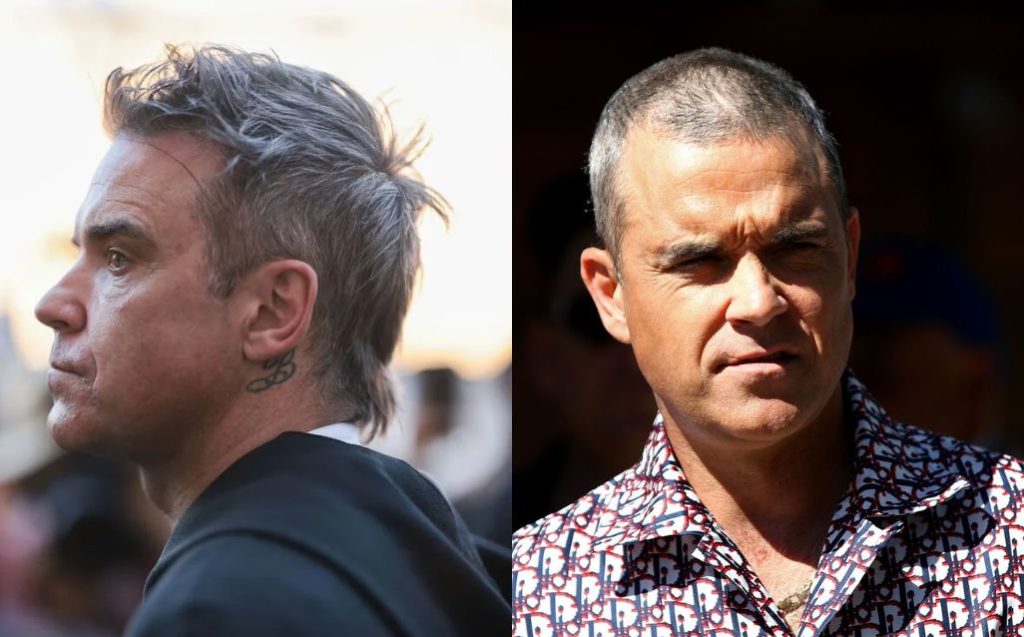
How Often Do Hair Transplants Fail?
It depends on the surgical team’s experience and the clinic’s medical standards for hair transplants. Unfortunately, up to 30% of transplants performed in unlicensed hair clinics result in failed hair transplants. A professional clinic would have a failure rate of less than 2%.
- Successful Doesn’t Mean Permanent
Again, as we explained above, successful hair transplants don’t mean the transplanted hair will remain planted on the head forever. Remember Robbie William’s experience? You will never know how long the hair is happy to stay on. As one of his fans, I’d be happy to see the hair remain planted till Robbie Williams turns sixty. But it didn’t.
How to Fix a Failed Hair Transplant?
Here comes the critical question. How do I get a failed hair transplant fixed? In this post, we won’t discuss medications and injections in detail. Because hair transplants are usually the most expensive and cause a lot of physical and emotional pain to the scalp, most people losing their hair would have tried other treatments first.
However, some patients, including our famous Robbie Williams, opted for hair transplants first and tried other ways to restore their hair. We’ve still listed medication, injection, and laser as an alternative, but not in detail.
- Medications
Finasteride is a drug frequently used (Propecia). For guys, it is a prescribed medication. Still, this medicine won’t be effective with aging-related hair loss.
- Platelet-Rich Plasma (PRP) Injections
To help natural hair regrow, the dermatologist injects medications into the patient’s bald or thinning areas. Platelet-rich plasma (PRP) is a medication that usually takes place every 4–8 weeks to curb hair loss and another 12 weeks to see new hair growth if there’s any.
- Laser Therapy
Scientific studies have discovered that laser rays could boost hair follicles to produce more hair. But more studies are still being carried out to prove it. Maybe in 12 years, scientists will update us with a more grounded theory.
- Another Transplant, such as a Corrective Hair Transplant
Having another hair transplant is one of the possible solutions for failed hair transplants. We will talk about this in a little more detail.
- Wigs or Toupees
When hair loss or balding can’t be fixed medically or physically, wigs or hairpieces are the only things that can be done. Regardless of the reasons, anyone of any age or ethnicity can use wigs, toupees, hairpieces, or hair replacement systems.
What Is a Corrective Hair Transplant?
It is a way to correct an unsuccessful hair transplant to get a satisfactory result. It might involve:
- Repeating most of the first surgery by increasing hair density.
- Correcting an ugly hairline, either by removing part of the initial surgery’s grafts that were too low and replanting them where they are needed or by adding more grafts and correcting the hairline position.
- Fixing excessive scars in the donor area from the first surgery.
Who Can Get a Corrective Hair Transplant for a Failed Hair Transplant?
Though many corrective or revision hair transplant procedures are successfully performed, the number of patients fit for a corrective hair transplant is much narrowed down.
Sometimes, damage from the original surgery is too significant that very little can be done. Some donor areas can’t give grafts for corrective transplants after they’ve been badly damaged.
But a well-trained and experienced hair surgeon can handle the situation professionally, devise plans to fix the damage caused by the first surgery, and get ready for a natural result.
Patients with the following issues can get a corrective or revision transplant:
- A new hairline looks abnormal.
- A lower-than-expected hair density.
- A stretched or wide (mostly happens in FUT procedures) scar in the donor area.
- The temples are too dense or bushy.
- Uneven patches of thick hair over the scalp.
- Have doll (grass)-styled hair.
What Are the Limits of Corrective Hair Transplants?
Though experienced and recognized by the hair restoration society surgeons, in some cases, there are limitations with revision hair transplant surgeries. That’s why a lot of failed hair transplants take place. The following are some limitations of revision hair transplants:
- Limited Donor Supply:
The donor zone has already been taken to a significant extent. Due to the changed orientation and flexibility of the hair, surgery gets more challenging, and the trans-section rate goes up. So, it’s essential not to take too much scalp, which would mean you need a beard and body hair transplant.
- Skin Structure on the Recipient Area Damaged:
The recipient area still exhibits scarring from the initial surgery, which impacts the blood supply. In rare cases, repairs may require more than one session. Also, the skin’s stress after some failed transplants causes structural changes.
- Advanced Hair Loss Analysis:
In most failed hair transplant cases, it has never been scientifically proven why an initial transplant could fail. Some isolated skin, hormone, or genetic problems with the grafts. Furthermore, severe alopecia-related hair loss may preclude the need for a corrective hair transplant.
- Transplanted Grafts in the Recipient Area:
There are already grafts in the recipient region. Choosing which of these are worth preserving and which to remove is critical.
If you had a failed hair transplant and selected a competent and reliable surgeon for your revision hair transplant, stay calm and trust your surgeon. Stress and mental tension can make the situation worse.
How about Medications or Injections after a Failed Hair Transplant?
Logically, most hair loss sufferers do medications or PRP injections before they opt for hair transplants, as hair transplants generally cost a fortune. However, like Robbie Williams, few seek medications or injections after a failed transplant. Unfortunately, no successful cases have been recorded thus far. We cannot tell if medications or injections after failed hair transplants will work.
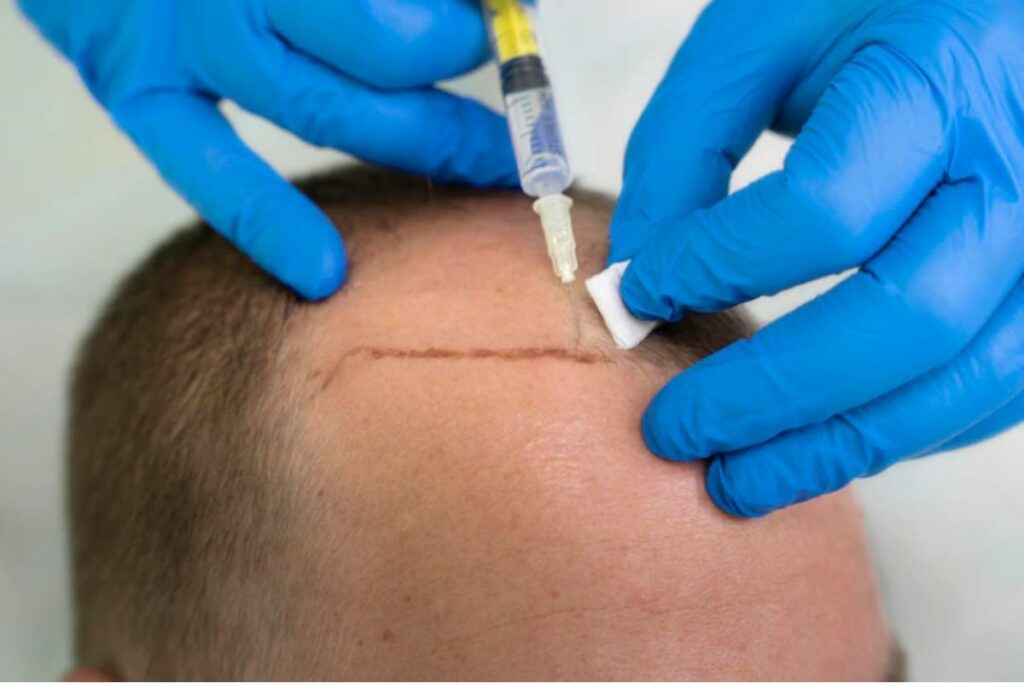
How about Toupees or Wigs after Failed Hair Transplants?
As mentioned above, no doctor worldwide can guarantee that once the hair gets transplanted, it will continue to grow in the new zone.
Many people’s hair falls again five or ten years after a successful transplant (I would call it a failed hair transplant). Take That singer Robbie Williams is a perfect example of this.
Wigs or toupees are the only options when neither medicine nor chemicals work. Robbie Williams stated that after a few failed attempts of using PRP and other medications, he would like to wear hair wigs or toupees for his round-world tours. Obviously, he’d done his study before he made the statement.
“There are these fantastic wigs you can get now,” said Robbie Williams to the camera. “You have it placed with special glue, and it sticks on.”
“I might actually do it just for touring,” he added to conclude the interview.
Consider if you are experiencing hair loss and your head is balding. Or if you’ve just had a failed hair transplant, what questions will you ask if you seriously consider wearing wigs or hair systems? After dealing with thousands of clients worldwide, these things keep the wearers from completing their first try.
Are Hair Systems Permanent?
No, toupees or hair systems must be replaced once in a while. The lifespan of a hair system means from the moment you buy a hairpiece to the moment you can’t use it and must throw it away.
However, the glue or tape used for attachment may get loose over time, allowing it to slip off or move out of position. With that, you need to visit a stylist for a touch-up once or twice a month, and then you can still use it until it can’t be used anymore.
A hair system’s lifespan depends mainly on the type of its base. The most natural-looking wigs or hairpieces typically last around two to three months. More durable toupee bases, such as monofilament, last much longer, at around six months to a year.
Generally, the more natural the toupee looks, the more delicate it will be, which means it wouldn’t last too long, typically 60–90 days. With hair system makers and distributors like New Times Hair, once you are registered with us, you are a client for life. When a replacement is needed, the experts at New Times Hair can easily make a new hair system that looks just like the old one.
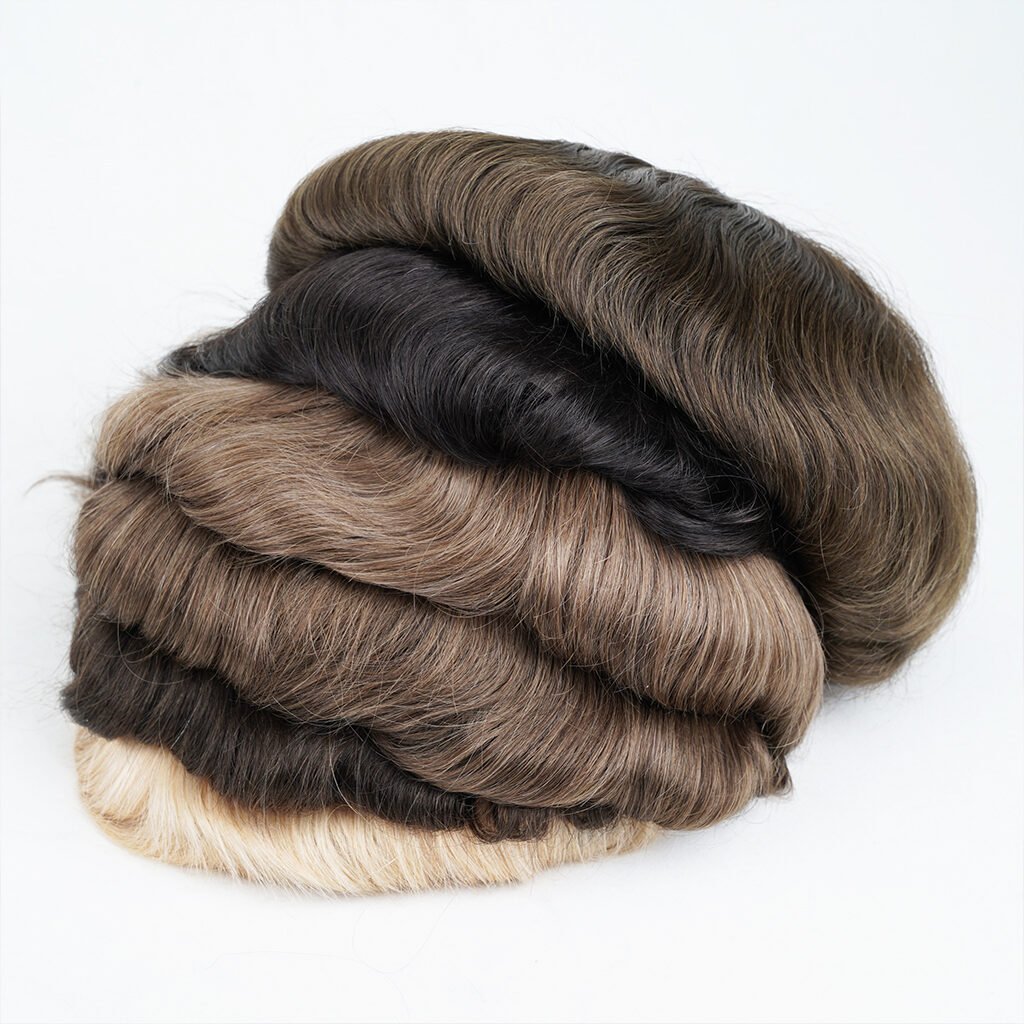
Some Typical Hair Systems at New Times Hair Most Wearers Use
Here are some of our hair systems with different bases. Have a look and register to get a wholesale discount to place the order.
- HOLLYWOOD Lace Hair System
-
HOLLYWOOD Lace Hair System With Thin Skin Perimeter and Lace Front Wholesale$115.00Rated 5.00 out of 5 based on 11 customer ratings
The Hollywood Lace hair system is a perfect choice for beginner hairpiece wearers. It has a French lace base, looking natural and authentic, and provides excellent breathability and most comfortable to wear. The PU skin perimeter prevents the edges from fraying.
- HS1 Thin Skin Hair System
-
HS1 Thin Skin Hair System Wholesale 0.08 mm Transparent Poly Skin$100.00 – $120.00Rated 4.88 out of 5 based on 16 customer ratings
HS1, easy and affordable, the PU base once glued on, will join seamlessly with the wearer’s natural scalp. The hair will blend perfectly to give a natural and authentic look. The wearer can go do almost all sorts of sports in it, such as diving, swimming, or riding a motorbike.
- INSEU Thin Skin Hair System With Longer Hair
-
INSEU Injected Thin Skin Hairpiece With European Virgin Hair Wholesale$155.00 – $215.00Rated 5.00 out of 5 based on 8 customer ratings
INSEU, skin base hair system made of PU skin base and European virgin hair, the rarest hair in the world. Virgin hair has never been processed. The quality is the world’s best.
Customization Services
We also have customization services available. You can contact us to have a hairpiece tailor-made to suit your client perfectly.
How to Install Hair Systems?
Before trying on hairpieces, many people have the impression that hair systems are just like the cheap wigs they can get from a supermarket for five bucks. They flip it on like a hat. And when it gets breezy, they have to cup it and hold it down in case it flies off and gets taken by the wind. Indeed this sounds tough to those who have had a failed hair transplant.
None of that is true.
If you plan to wear wigs or toupees seriously, you must change your mindset. The best wigs or toupees are made to look like the person’s natural hair in every way.
Most of them are glued or taped to the wearer’s scalp using special adhesives or tapes. The base melts seamlessly into the wearer’s natural scalp, and the hair blends with the natural hair. No one can tell that the wearer is wearing a hairpiece.
The wearer of a hair system may require a fortnightly or monthly touch-up. That is mainly due to the glue or tape getting less sticky as his natural hair grows under the base. But as long as the hairpiece remains attached to the head, it feels like natural hair. The wearer can go swimming, biking, or even skydiving, but the wig or toupee doesn’t go anywhere.
Watch Michael’s life story about a toupee and better understand what a typical wig or toupee is all about.
The master hairpiece Michael shared in the video is this HS25 men’s hair replacement system.
-
HS25-V 0.03mm Ultra Thin Skin Hair System Wholesale V-looped Human Hair$95.00Rated 5.00 out of 5 based on 18 customer ratings
Final Thoughts
As statistics demonstrate, hair transplants are not for everyone. Only a small percentage of hair loss sufferers’ hair is fit for transplants. For those whose hair is healthy enough, their head can’t be over 50% bald, or their remaining hair won’t be able to cover the balding areas.
Many hair transplants fail. That’s mainly due to unqualified surgeons and undercharged hair surgeries. Still, no doctor can say how long the hair will stay in a particular scalp area. Many people’s newly transplanted hair continues to fall out five or ten years after a successful transplant.
There are medications or PRP injections available for hair regrowth. However, most people will try them first before undergoing hair transplant surgery. Revision hair transplant surgery may or may not work.
Hair replacement systems are the ultimate solution so far that will give instant volume and length, which makes all hairstyles achievable. Hairpieces cause no harm to the scalp. All kinds of people, for whatever reason, can use them.
Click to view a complete collection of our top-notch wigs and toupees.
